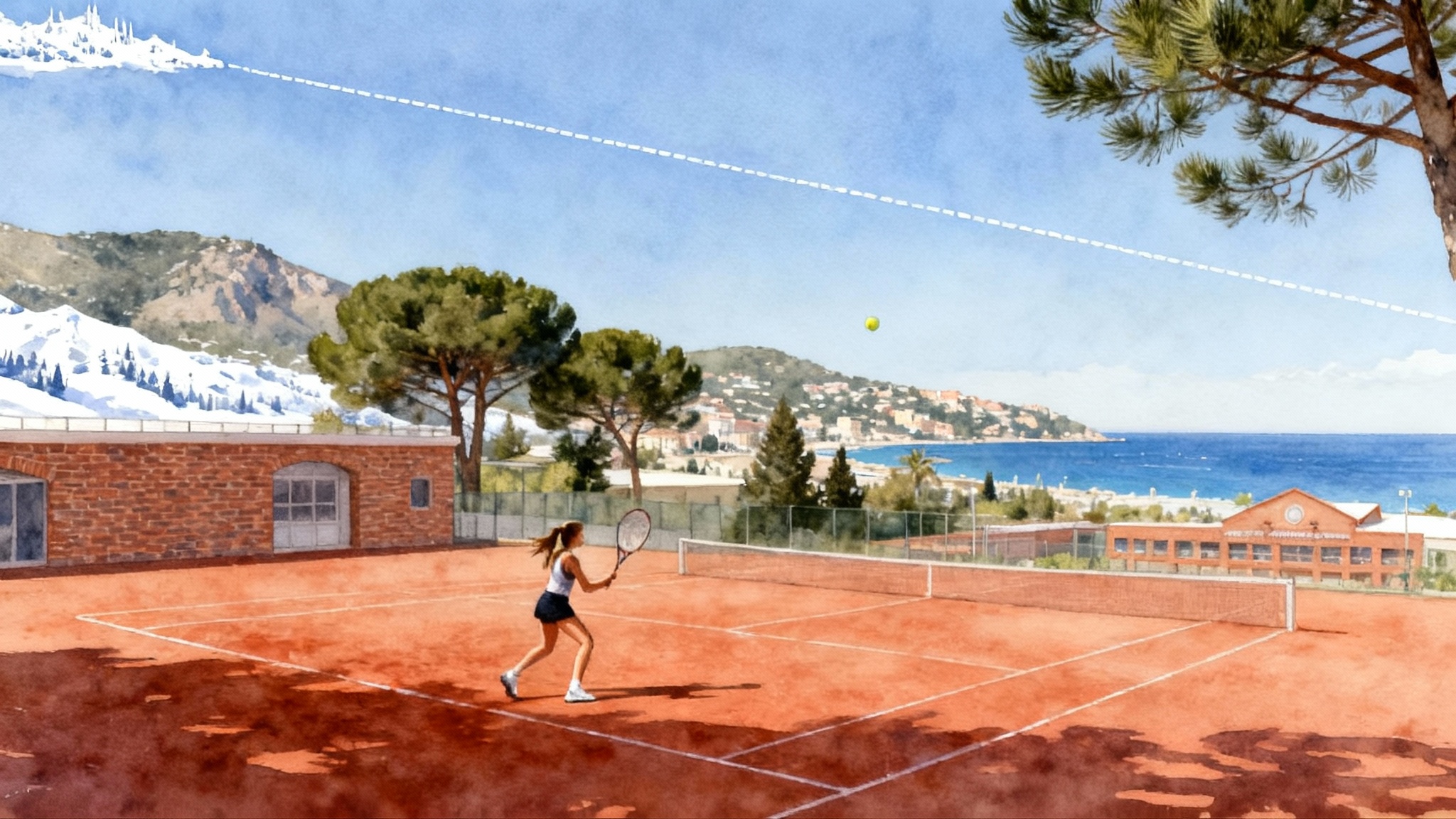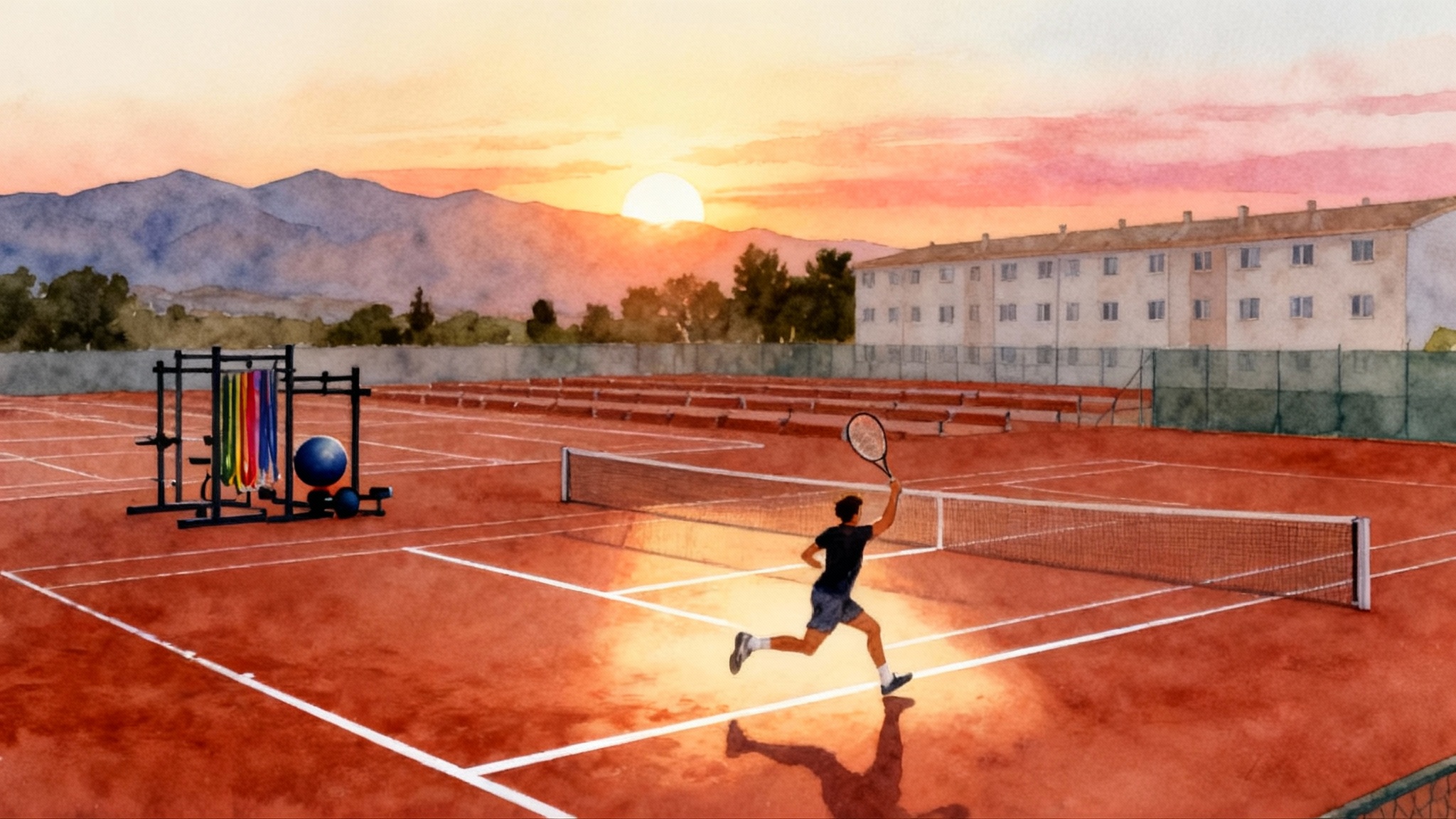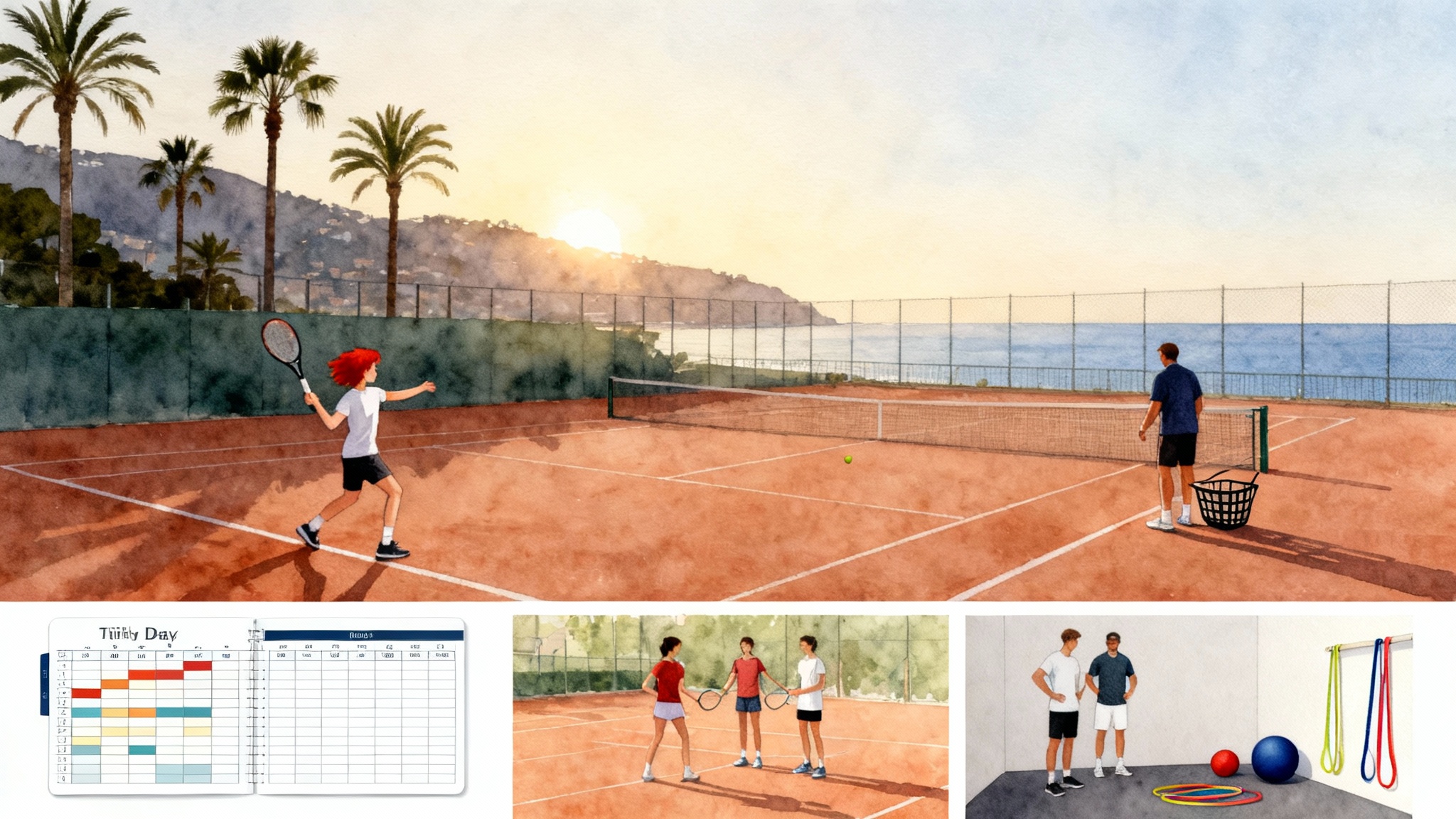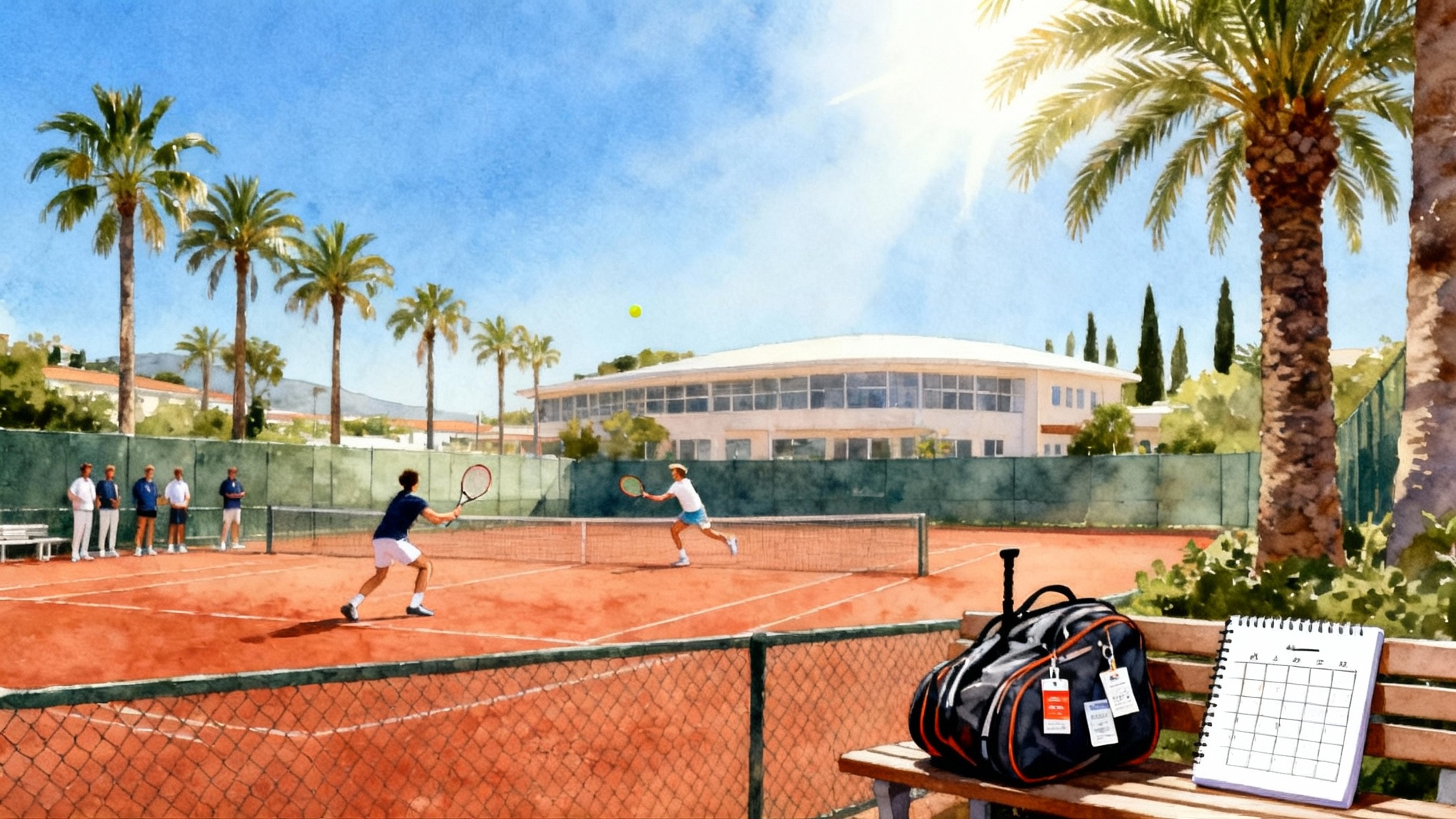From Hilton Head to WTA Elite: Pegula’s Smith Stearns Roots
Jessica Pegula’s 2025 surge traces back to Hilton Head. Her years at Smith Stearns on green clay, plus smart pro choices in coaching, scheduling, and rehab, built the point construction and reliability that now anchor her WTA elite status.
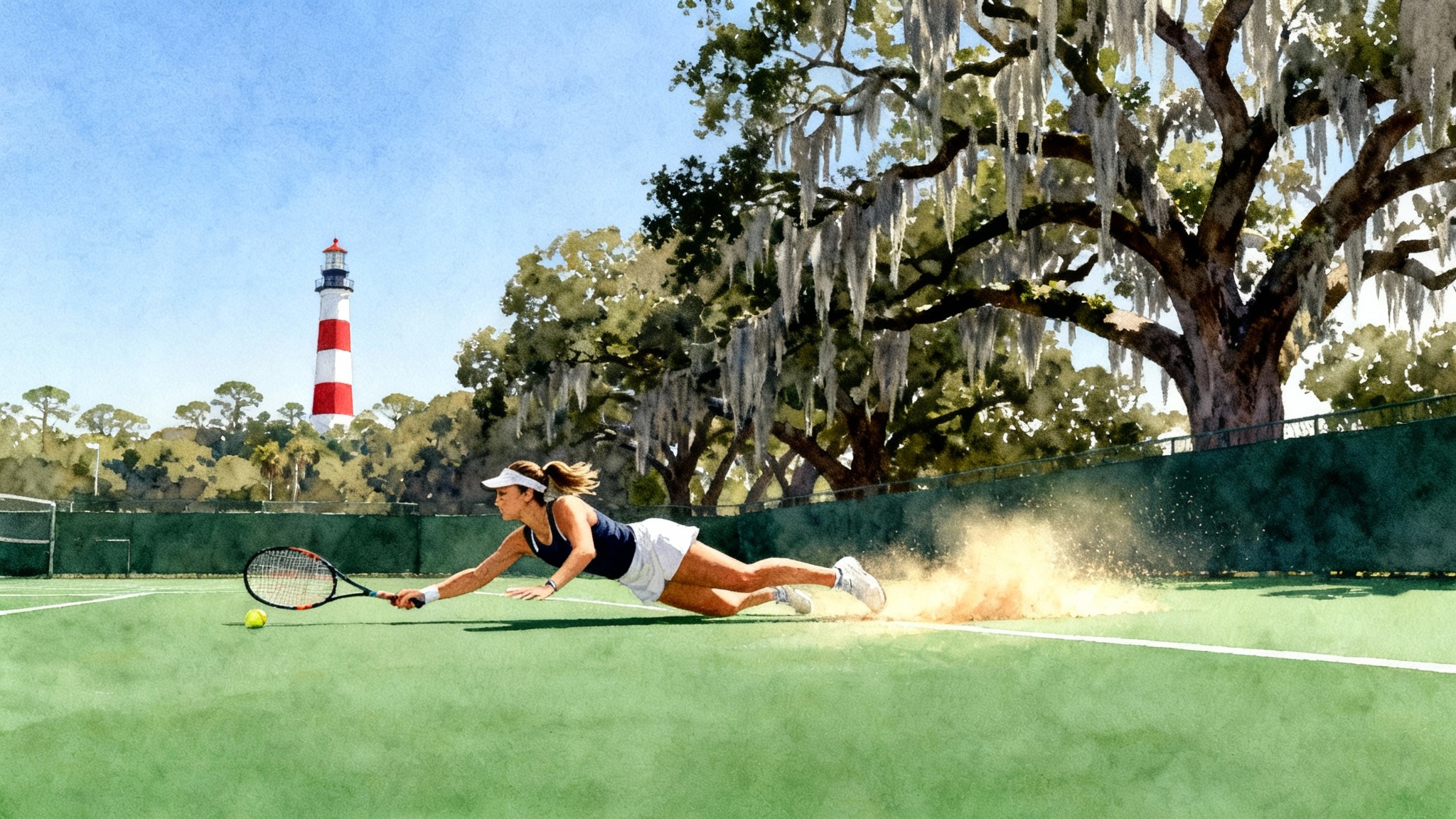
A Charleston speech that pointed back to Hilton Head
When Jessica Pegula lifted the trophy in Charleston in April 2025, she did more than offer routine thanks. She retraced her steps to Hilton Head, to childhood hours on green clay and to the club-based Smith Stearns Tennis Academy where she says she learned how to play. Her comments were a blueprint, not nostalgia, and the event’s official interview transcript captured the specifics in her words. Read the details in Pegula’s Charleston transcript.
Pegula is a late bloomer by modern standards. That path can feel risky to families who see peers peaking at 15. Yet her climb shows how an early clay foundation, a club community that prizes sound mechanics, and adult-level professionalism around injuries can compound into elite performance. For a complementary case study in clay-centered development, see how Nadal Academy shaped Casper Ruud.
What a club-based academy actually does
A club-based academy is different from a campus built only for tennis. Smith Stearns is integrated into The Sea Pines Racquet Club ecosystem in Hilton Head. That setting matters for three reasons:
-
Mixed-level rhythms. Juniors share space with teaching pros, adult clinics, and college players passing through. The message is implicit: tennis is a lifelong craft, not a sprint. For a seven to twelve year old, that normalizes daily habits like showing up early, using a practice court intentionally, and seeking feedback between drills.
-
Clay saturation. Har-Tru green clay is the house surface. Players learn that rallies breathe, that height and spin change time, and that defense can become offense two shots later. On clay, footwork is a skill, not a reflex. Juniors get hundreds of reps sliding into neutral, then building patterns that do not depend on raw pace.
-
Family scale. Housing is home-style, not dorm-style, and the coaching staff is visible to parents. That reduces churn. Fewer dramatic overhauls, more steady course corrections. For a late bloomer, continuity is oxygen.
Pegula’s technique reflects that environment. Her backswing lines are clean, her spacing under pressure is reliable, and her shot selection rarely panics. You can think of clay-first training as learning to drive stick shift before switching to an automatic. When the match speeds up on hard courts, the hands and feet already know how to find the right gear.
For another club-rooted pathway that produced world-class habits, check the JTCC pathway and match play.
Clay first, then everywhere
Charleston’s green clay is not Paris red, but the principles rhyme. Pegula’s point construction often follows a three-beat structure that is classic clay thinking:
- Beat one: neutral ball with shape to a big window, usually crosscourt, to claim width.
- Beat two: depth to the open side, not for a winner, but to shrink the opponent’s backswing.
- Beat three: line change or short angle that forces a defensive contact, then move forward behind it.
Watch her when a return game gets tight. She does not hunt a single haymaker. She reruns a pattern that nudges position, rhythm, and height in her favor until a finish is high percentage. The artifacts of clay are obvious in her spacing on the backhand and her willingness to reset with height rather than flattening out a low-quality ball.
For families weighing surfaces, here is the practical takeaway: if your player learns to win on clay without a bailout weapon, that toolkit travels. It is easier to add pace to a solid foundation than to rebuild a rushed foundation later.
The late bloomer blueprint
Pegula’s rise was not linear. A knee issue in the middle of the last decade, then a hip surgery period, forced a reset of fitness and scheduling. Many players meet that crossroads and choose volume. She chose sequence. Instead of chasing points week to week, she targeted a manageable set of events, built fitness that could withstand back-to-backs, and accepted that momentum comes from healthy months, not heroic weekends.
Fast forward to 2025, and the pattern is visible. She opened the spring with a confidence-building title in Austin, played deep into Miami against the very best, then converted that form into her first career clay title in Charleston. The macro choice was clear: play where point construction is rewarded, consolidate strengths, then scale up.
Families can reverse engineer that approach:
- Pick two surfaces per six-month block. If clay is the classroom and hard is the exam, spend three days out of five in the classroom.
- Treat a 250-level or regional event as the confidence engine. One good week on a familiar surface is often worth more than three scattered first rounds.
- Put a guardrail on travel. A healthy ten to twelve week runway with known courts and known routines beats fifteen stamps in a passport.
Coaching choices that sharpen patterns
In early 2024 Pegula reshaped her coaching team. The on-court product since then looks incremental rather than flashy, which is exactly the point. Her patterns are crisper, her doubles instincts show up in singles as early court position and cleaner first-volley decisions, and her between-point resets are faster. Whether you bring in a new voice or simply broaden the staff’s expertise, the mechanism is the same: you are buying better feedback loops.
What can juniors copy without copying the resumes of elite coaches?
- Add a doubles-literate voice for twelve weeks. The goal is not serve and volley. It is learning first-strike locations, return depth that sets up plus-one, and movement through the court instead of to the ball.
- Film one practice per week and one match per weekend for six weeks. Tag only three metrics: first-ball depth, crosscourt height, and neutral-to-offense conversions. The tape will tell you if patterns are improving without emotional bias.
- Schedule short theme blocks. Two weeks on high ball forehand from outside the doubles alley, two weeks on backhand line change from the inside hash, two weeks on transition approach footwork. Specificity beats volume.
Rankings are the smoke, not the fire
Rankings validate choices; they do not create them. Still, they offer useful checkpoints. Pegula returned to No. 3 in April 2025 and spent much of the spring in the top four, according to the WTA week-by-week ranking history. That trajectory tracked with her scheduling logic. Fewer spikes, more plateaus. The underlying fire was consistent entries and exits from points, an injury-resilient body, and a pattern library that travels across surfaces.
If your player’s ranking is stuck, change the inputs that feed the ranking. More clay reps, tighter tournament selection, and a weekly feedback loop will move the needle without chasing points.
Injury management as a competitive skill
Pegula’s career has a before and after line that corresponds to her hip recovery and the professionalism that followed. She has spoken about learning how to invest in durability, not just intensity. The lesson for families is simple: the body is the first asset, and managing it is not guesswork.
- Periodize the school year. In an August to May calendar, build two aerobic base blocks of three weeks each, one in late August, one in January. Maintain with two strength sessions per week from a qualified trainer who understands junior growth phases.
- Prehab is not optional. Ten minutes before and after every hit, every time. Ankles and hips are the hinges of junior tennis. Teach the ritual young, and you cut the odds of chronic issues that derail two full seasons.
- Rest weeks are training. A true down week every ten to twelve weeks with no tournament and reduced court time lets the player arrive healthy to the next block.
The gain is not only fewer injuries. It is also a more stable forehand at 4-all, because fatigue management and technique stability are married. A body that moves predictably under stress allows a player to recycle shape and depth without over swinging.
What U.S. families can borrow from Hilton Head
Here are the most replicable elements of Pegula’s pathway.
- Club-based academy benefits
- Look for an academy embedded in a working racquet club, not isolated from it. The presence of adult players, college alumni, and a visible pro staff teaches professionalism by osmosis. A similar setup is the SPORTIME Port Washington pathway.
- Ask about the ratio of clay to hard courts and how often juniors compete on each. A curriculum that defaults to clay for technical reps and uses hard courts for speed adaptation is ideal.
- Verify the housing and supervision model. Home-style setups with house parents encourage life skills and stability. Stability appears in match habits.
- Clay-first foundations
- Insist on height, shape, and footwork education, not just winners. On clay you should hear coaches cue spacing and recovery lines as often as they cue racket speed.
- Measure construction, not just conversion. Track how often a player turns a neutral rally into a short ball within three shots, not only whether they finished the point.
- Phased late bloomer pathway
- Ages 7 to 12: prioritize technique and movement on clay, cross-sport play for athletic development, and two quality lessons over five unfocused clinics.
- Ages 13 to 16: build a regional schedule with surface blocks, layer in fitness habits, and play doubles to learn first-strike patterns.
- Ages 17 to 20: test in stronger fields in defined bursts, protect down weeks, and measure progress with video and two or three clear statistics. If pro ambitions exist, consider selective low-level pro events without abandoning college options too early.
None of this requires a genius serve or a viral forehand. It requires choosing environments that make good habits unavoidable.
A simple diagnostic families can run this month
- Three-match audit: in the next three events, mark on a notepad every time your player wins a point after hitting a neutral crosscourt ball with height. If that number is near zero, the construction engine needs work.
- Practice census: in the next two weeks, write down how many minutes are on clay, how many on hard, and how many in fitness or mobility. Rebalance toward clay and mobility if technique under pressure keeps fraying.
- Pattern library: pick two patterns, one on serve games, one on return games. For example, serve wide on the deuce side, first ball heavy crosscourt, then line change if feet are balanced. In return games, chip middle for depth, recover early inside the baseline, then use height to the backhand corner. Run those patterns on big points until they feel boring. Boring is a sign of mastery.
The Charleston circle, closed on green clay
Pegula’s trophy in Charleston was not a surprise to those who listened to her speak about Hilton Head. Childhood reps on green clay grew into professional patterns that thrive under pressure. A club community gave her stability. A late bloomer mindset let her treat rankings as checkpoints rather than obsessions. Coaching tweaks brought sharper feedback. Injury management made consistency possible.
Families do not need Charleston’s stadium to copy that arc. They need courts that teach patience, coaches who care about mechanics and movement, a schedule with purpose, and a body ready to play many honest points. That is what Hilton Head offered a young Jessica Pegula. Years later, it is what carried her from club courts to the WTA’s upper tier, one well constructed point at a time.
